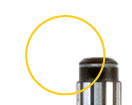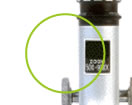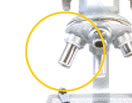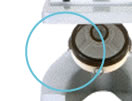|
|
|
 |
 |
 |
 |
 |
Peter Olcott
Bioengineering
Bio-X SIGF Fellow 2009
Profs. Craig Levin (Radiology) and Robert Feigelson (Materials Science & Engineering)
PET is a non-invasive, in-vivo, functional, molecular imaging technology that is an important tool for clinical disease management and pre-clinical small animal research. Peter wishes to improve the time resolution by more than an order of magnitude over the current generation of time-of-flight (ToF) PET systems by investigating readily available non-linear photonic materials for use as a ToF PET detector instead of scintillation crystals. These materials are not based on fluorescence and have the potential to enable sub-millimeter localization. This would revolutionize PET imaging and greatly improve its performance for characterizing early disease. |
 |
|
 |
|
|










